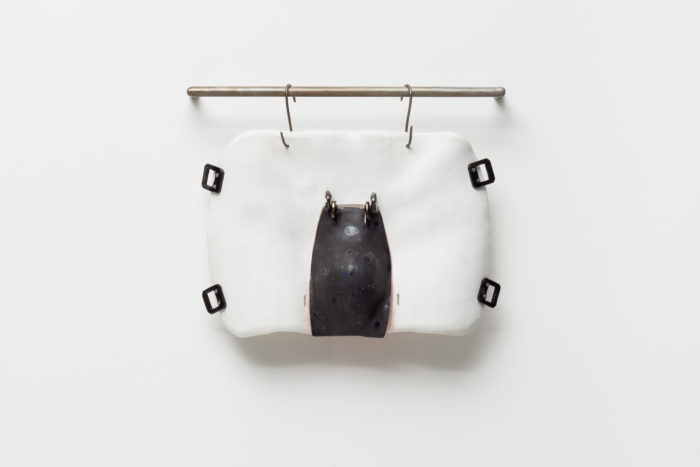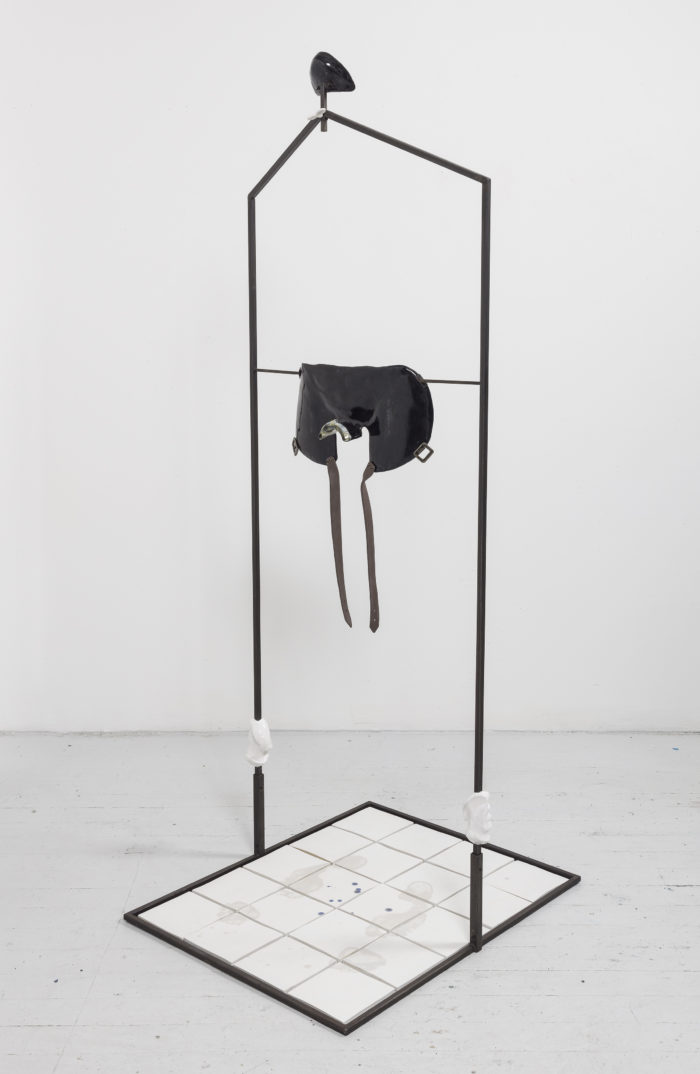
Phillips gravitated toward the idea of muting for its myriad associations, from physical to metaphorical to historical. “It can be an actual object,” she says, or “it can affect an entire nation,” as in violations of freedom of speech rights. “It can also happen in relationships, feeling muted. These are the parallel mechanisms of oppression I’m interested in.”
This spring, Phillips opens her first solo institutional exhibition, “Failure Detection,” at MoMAPS1. The exhibition’s curator, Ruba Katrib, says she “was struck by Phillips’s use of materials, as well as how she creates objects and sculptural scenarios that are suggestive of physical and psychic punctures and supports.” She adds that exhibition’s title “refers to the potential for diagnosis, but leaves questions as to whether the failure detection is preventative or whether it’s already happened.”
Born and raised in Hamburg, Germany, Phillips attended her hometown’s art academy. After school, she moved to Berlin for a year and a half and worked with feminist collaboratives. In 2013, she decamped to New York to attend Columbia’s MFA program. There she started exploring materials like ripped pantyhose, which she depicted in the print series Expanded. “The detail has a very skinlike quality that represents the body,” she explains.

A shift toward more direct modes of figuration happened during her second year at Columbia. Phillips describes an epiphany after spending time at the Metropolitan Museum looking at armor. “Armor is centuries old, but we can look at it and can relate to it, because the body is so intuitively relatable.” Her recent sculptures include elements cast from her own face and body, which evoke associations with shields, masks and chastity belts.
Phillips’s PS1 show comes on the heels of presenting her work in the New Museum Triennial “Songs for Sabotage,” as well as residencies at the Studio Museum in Harlem and at the Goethe Institut’s Vila Sul in Brazil. The Triennial selection includes Observer, which explores “relations that can happen with a wide range of intentions,” Phillips says. In the future, she is planning to create sculptures with a different tone, like Supporter and Stabilizer. “I still don’t know what they look like, but I have titles in my head.”











 in your life?
in your life?

